A Grave Matter
Part 2 of the Rockland State Psychiatric Hospital tour will be up on Monday, and there’s a lot of cool stuff yet to see, so be sure to check back. In the meantime, had a quick question…
I was in a Jewish cemetery recently, and noticed this box in front of one of the graves.
Judging by the rocks and paper on the grave, I’m guessing something happened fairly recently…
…but what exactly is this used for?
Just curious.
UPDATE! Answers are in the comments from some helpful readers. Thanks guys, fascinating!
-SCOUT



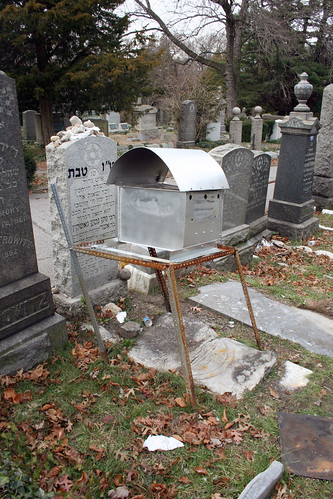
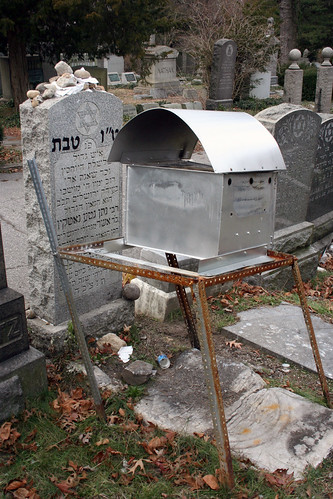
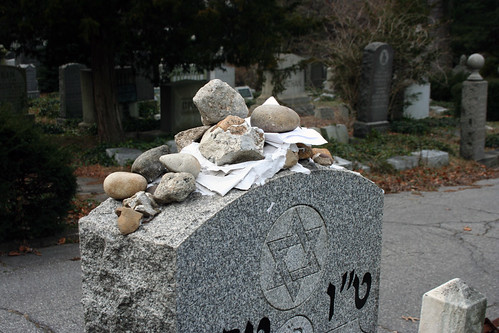
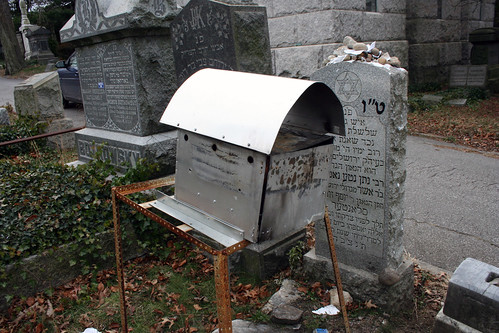
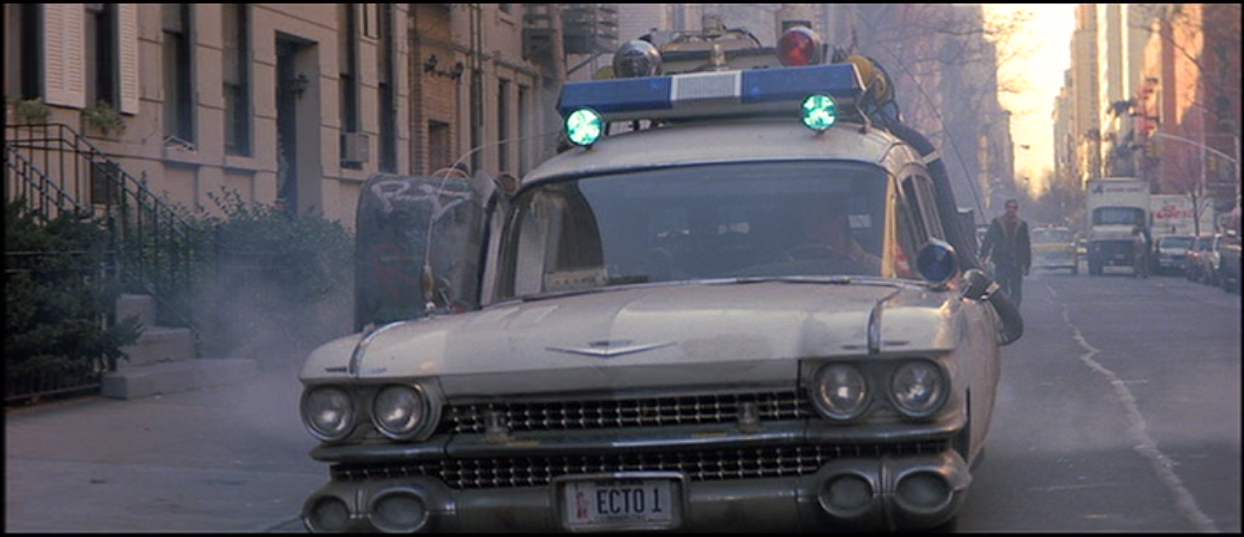





No idea about the box (charity? Anonymous donation perhaps?), but as an Israeli Jew I can tell you that the rocks are part of a traditional Jewish custom – every year, at the Yahrzeit (memorial day, the anniversary of the deceased’s death) relatives and friends gather around, say prayers (esp. in Orthodox Judaism) and each participant leaves a rock or a pebble as a sign of remembrance. Never seen paper placed like that on a grave before, but I’m guessing that similarly to the tradition in the Wailing Wall in Jerusalem, they include special prayers by relatives of the deceased – who, by the way, is Rabbi Nathan Natkin, who lived in Palestine at the end of the 19th cent. (I think) and traveled to the states to collect donations for the congregation back at home.
According to the tombstone he died on 16 Tevet, which in 2010 was December 23, so you just missed the Yahrzeit! (Which is why the rocks are still on the tombstone – they haven’t been put there that long ago)
Hope that helps!
Oh, wait, I’m an idiot – of course I’ve seen these boxes before. Riddle solved, methinks.
http://en.wikipedia.org/wiki/Yahrzeit_candle
Yasher ko-ach, Michael!
A Chassidic practice is to leave notes and prayers on the grave sites of Tzaddikim — Righteous People — and these have effects similar to notes place at The Wall (Kotel). Pilgrimages to posthumous celebrities happen regularly, some people travelling thousands of miles for a Tahrzeit. Judging from the size of the candle box, this guy is somewhat of a popular Tzaddik to visit.
From the writing on the tombstone, the grave is that of an apparently famous, brilliant Rabi.
‘A great genius’ says one line.
The notes, are likely prayers either for him, or to him, or requests for guidance, as some jews believe a great Rabi can help communicate their prayers to God, and can supply good advice.
The box, may be what Michael has noted, but it could also be a box to burn the prayers and notes as an offering to God.
Some aspects of Judaism, are quite complicated, and I am, by no stretch of the imagination, an expert. My assumptions about the box may be wrong, but I know I read the tombstone correctly, and this was a highly esteemed Rabi.
Yes, that is a wind/rainproof box for placing candles.
Thanks to everyone who chimed-in … I would never have guessed!
awesome…great community here…
Hey Scout –
The reason for the rocks is mainly that it indicates that someone was there. In Jewish tradition, one does not leave a flower at a grave because flowers eventually die. Rocks/stones, however, do not.
Another reason has biblical roots – In the book of Genesis, Jacob puts a “pillar of stone” to mark the place where Rachel (his late wife) was buried. He also gathered his “brethren” to gather stones and mark the place of Rachel’s burial.
The box is a protector for a “Yehrtzeit (pron. yaer-tzite) candle”. They are lit a few times a year, including the anniversary of the persons death and Yom Kippur. The candle will burn for 24 hours.
Hope that helps!
Just so everyone knows; the above information about the stones placed on top of the grave to show that someone was there is not just a custom for the well known Rabbis. Even if the grave is of your mother and in Herkimer, NY — the top of her grave has stones!
The custom of leaving rocks or stones on a grave site is not restricted to the Jewish faith. My understanding is that the custom is derived from the middle east and arabian penninsula where people were buried in desert climates. As people were buried with sand (rather than moist soil) as coverage, there was always a danger that the sand would be blown away to reveal the body. This was considered disrespectful as scavenging animals would sometimes feast on the deceased.
To prevent this from occurring it became a common practice to place stones directly on a grave to ensure that the body within remained covered. When people passed a burial site, they would continue the custom and place a stone to ensure the body remained under constant cover.
Placing the stones on the gravestone (rather than the grave) is a shift in the practice of unknown origin.
Wow, reading through the archives and there really is nothing like stumbling upon a little antisemitism in an otherwise interesting string of comments.
Perhaps the above comment about rocks being cheeper then flowers (those cheep Jews!) could be removed?
It certainly does nothing good to read this garbage.
Oh my! Somehow iPhone auto corrected
all of my ‘cheaps’ into ‘cheeps’
How embarrassing!